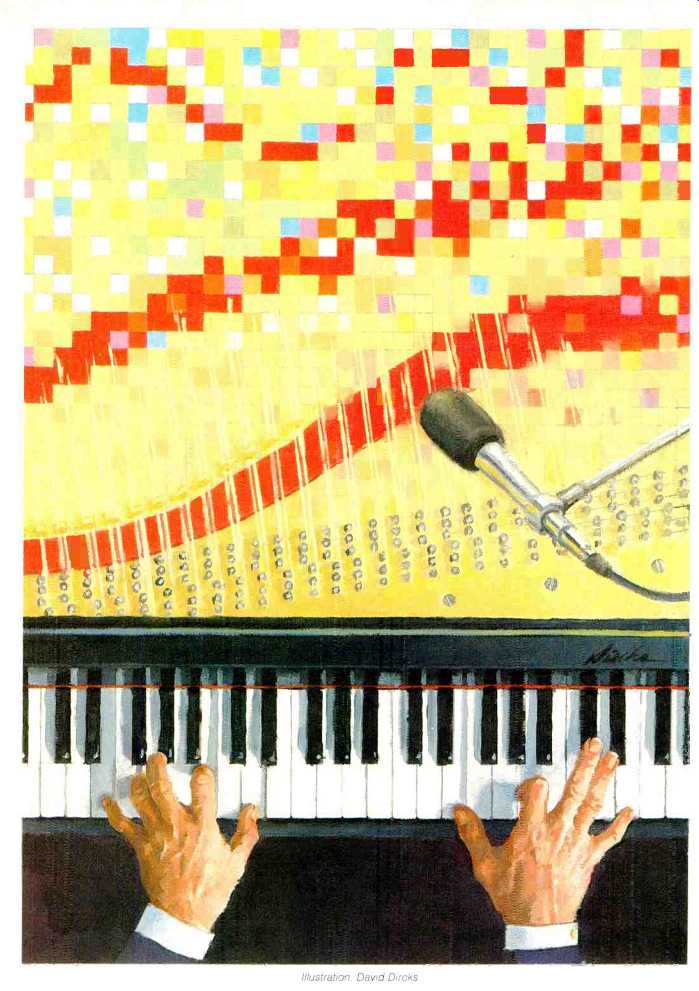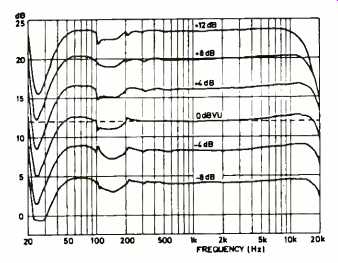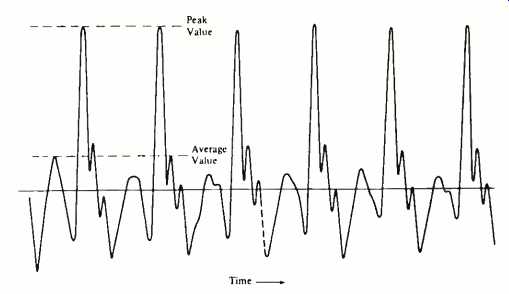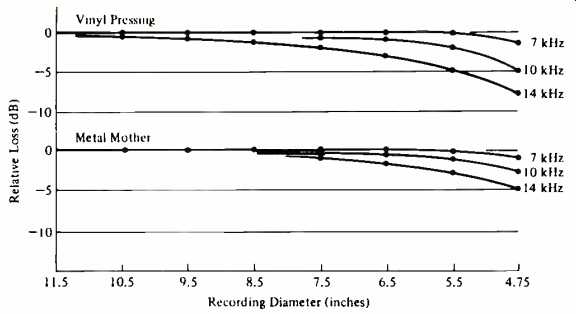
by JOHN EARGLE
Nothing is wrong with digital; it's just that analog's nonlinearities were carried over to it.
When stereo LPs mastered from digital sources appeared in the late '70s, they were not met with complete enthusiasm. Many audiophiles raised their eyebrows, complaining of edginess and "lack of ambience." A few years later when the CD appeared, everyone was impressed by its low noise floor and un questionable bass response, but many of the same audiophiles still found fault with digital recording. Again, the major complaint was edginess, even more so than with the digitally mastered LPs.
It has only been in recent years that most major record companies have altered their recording techniques in order to produce better CDs, and just about everybody would agree that re cent discs sound far better than the early ones. Of course, CD players have become better too, and that is also a substantial reason for the overall improvement in sound.
Many people would like to think that recording techniques had to change in order for CDs to sound their best--and that there is something inherently wrong with the digital technology which forced these changes to be made. I would like to put forth the opposite notion-that there has been something inherently wrong with analog techniques all these years, which required recording methods to be adapted to them. While avoiding the digital/analog controversy per se, I think it can be shown that there are enough nonlinearities in analog re cording techniques to have profoundly shaped the medium by these inherent characteristics.
Analog Nonlinearities
Consider state-of-the-art analog tape recording at 15 ips without noise reduction. Assuming one is using the best tape available and recorders with adequate electrical headroom, we ob serve the typical situation shown in Fig. 1. These curves indicate response roll-off of high frequencies at high recording levels. The actual amount of roll-off is dependent on the kind of tape that is used, the equalization curves that are chosen, and the reference modulation level.
Are such high levels reached in normal recording operations? The clear answer is yes. Even when a recording engineer is ostensibly operating his equipment at safe levels, there can be such signals present as that shown in Fig. 2. This trumpet waveform illustrates the high ratio of peak-to-average signal value which can exist in music.
The important thing here is that such a signal, even if produced as a steady state tone, can register on a standard VU meter as being no greater than zero level, while in actuality, peak levels some 13 dB higher are reaching the tape. Since the spike in the wave form is obviously high frequency in nature, it is clear that it will be partially rolled off through the recording pro cess. Now, if the recording engineer allows his VU meters to register 3 or 4 dB above reference level-and this is not uncommon-then we are really into high-frequency roll-off!
We probably will not hear this roll-off; more to the point, we probably will hear no distortion due to the nonlinear action of the tape. The mechanism at work here is high-frequency self-era sure, and it has functioned over the years as an inadvertent but often benevolent audio signal conditioner. In general, the roll-off due to self-erasure produces master tapes which transfer easily to the master lacquer disc used in record production, since potentially troublesome high frequencies are attenuated by the process.
Disc recording and playback operations use complementary frequency pre-emphasis and de-emphasis, and the range from lowest to highest frequencies is 34 dB. What this means in practice is that the disc cutting pro cess is very sensitive to the amount of high frequencies present in the pro gram source.

Fig. 1--Analog-tape output curves fly six recording levels. Note how
high-frequency roll-off above 8 kHz increases with recording level. Recordings
were made at 15 ips, kink in curves between 100 and 200 Hz an artifact of the
measuring system. (Data taken from John Borwick, Sound Recording Practice,
Oxford University Press, London, 1976. pg. 119.)

Fig. 2--Trumpet waveform (about 400 Hz), with peak-to-average ratio
of 13 dB. Signals like this are common in pop-music recordings in which
microphones are placed close to instruments. (From John Eargle, Handbook
of Recording Engineering Van Nostrand Reinhold, New York, 1986, pg. 124.)

Fig. 3--The RIAA pre-emphasis curve used in disc recording to conserve
modulation space at low frequencies and raise high frequencies above
the inherent disc noise. A complementary de-emphasis curve is used in
playback to restore flat response.
The disc recording pre-emphasis curve, shown in Fig. 3, has a considerable effect on playback nonlinearities. These are shown in Fig. 4, and the curves have been normalized to the outer diameter of the disc. It can be seen that at inner diameters, where music is often loudest, there is substantial roll-off of high frequencies.
These losses appear to be additive; that is, the losses shown for the vinyl pressing are the sum of the losses en gendered in the cutting process (shown in the curve for the metal mother) and those due to deformation of the vinyl material itself.

Fig. 4--Change in disc high frequency response from outer to inner grooves.
Signals were recorded at 15 dB below 1-kHz reference velocity of 5.5
cm/S, using RIAA pre-emphasis and de-emphasis curves: playback measurements
were made with an elliptical stylus having a horizontal scanning radius
of about 0.0002 inch. (From John Eargle, "Performance Characteristics
of the Commercial Stereo Disc," Journal of the Audio Engineering
Society. Vol. 17, No. 4, 1969.)
Corrective Feedback Around the Creative Loop
Over the years, research and development engineers in the recording industry have addressed the problems caused by both tape and disc nonlinearities and taken certain corrective measures. The first measure was the easiest to implement: The use of brighter microphones in the studio it self. This produced a brighter master tape, and if still more brightness was needed, then additional high-frequency program boost could be added during the transfer from the master tape to the master lacquer. In some cases, another interim master tape would be made, the so-called "EQ-ed" master, and it would be used for subsequent disc transfer. At each step, an engineer and/or producer made an equalization decision based on playing back a reference lacquer or possibly a test pressing. In some cases, additional high-frequency boost was added simply on the basis that the pressing operation itself would result in slight diminution of high-frequency response, due to the polishing of some of the metal matrix parts used in replication. These cumulative steps amounted to corrective feedback around the entire engineering, manufacturing, and playback loop, as shown in Fig 5.

Fig. 5--Corrective feedback processes performed by recording engineers
in LP recording and manufacture.
The overall procedure became so ingrained in the industry that every new step in the process was at first suspect--even if it audibly improved any part of the chain-because it upset some delicate balance. The first of these improvements was Dolby A noise reduction, which was introduced in the mid-'60s. With noise reduction, recording on tape could be carried out at lower levels, thus producing less high-frequency self-erasure. While everybody agreed that these tapes sounded better in terms of noise, not everyone agreed that the overall high level spectrum was quite what it had been before or that it produced the record which everyone expected.
Enter Digital Recording
By its very nature, digital recording exhibits flat power bandwidth. By this I mean that it can record all frequencies in its pass-band at full level. There is no roll-off of high frequencies, even at maximum recording level.
If we simply replace the analog tape recorder with a digital recorder, we have taken one set of nonlinearities out of the overall loop. Since the "correction" for these nonlinearities probably still exists somewhere in the chain, we have upset our delicate balance some what.
This is what happened in the late '70s, when digital recorders were first introduced to the industry. The "correction," now out of place, was the bright microphoning to which engineers had become partial. In fact, the current demand for truly smooth micro phones dates from this period. In particular, many of the engineers who first espoused digital recording, sought out super-flat instrumentation microphones to use instead of the peaky studio models that were standard at the time.
When the CD finally hit the market, there was a wild rush to get product out. The major record companies went back to their "EQ-ed" tapes (since these were the ones which had received artists' final approvals) and directly transferred them to digital master tapes, which were used to make CDs. Then all hell broke loose. Much of the resulting sound was terribly bright and harsh, and we can easily see why.
The tapes used to create the CDs were primarily intended for LP cutting and had built into them all the corrections needed for that process. Of course, not all analog master tapes were that bad, and not all companies had a history of heavy post-processing of their recorded material. However, one need look no further than the earliest CD reviews in Audio to appreciate the enormity of the problem.
In relatively few years, we have seen the industry rethink the entire recording process. One great boon here has been the return to direct-to-stereo classical recording by most companies, due to the high cost of multi-channel digital recording. When one records directly to stereo, there is little that can be fixed later. The balances must be correct at the outset-and they must be arrived at quickly. This constraint has led to the use of fewer micro phones; we now find superb classical orchestral recordings being made with as few as three.
Whether three or 12 microphones are used is not the main point, how ever. What is important is the quality of the microphone, and today there are superb models, in all pickup patterns, that have remarkably flat response and extremely low self-noise. This means they can be used a bit farther away from the orchestra with no loss of detail or signal-to-noise ratio. Likewise, to day's better mixing consoles have improved input characteristics and low distortion throughout.
Digital recorders themselves have improved remarkably in recent years, notably in the areas of input and output filtering and linearity of the conversion processes. The complete recording chain now used by many companies in producing classical CDs has become a very simple one, and operational procedures used to ensure signal integrity are straightforward. Most important, the numerical data which ends up on the CD is, except for changes introduced in the editing process, virtually the same as what is committed to digital tape at the recording session.
To many engineers involved with digital recording, the simplicity of the overall chain has made it possible to return to the basic stereo techniques that we have all read about over the years. Figure 6 shows a typical stereo digital recording chain in which the signal remains in the digital domain from the recorder until it is played back by the listener.

Fig. 6--The digital recording chain. In a normal setup, levels are adjusted
for equal headroom, usually 20 dB, in the mixing console's output and
the digital recorder. Microphones that can handle the anticipated peak
acoustical signals are chosen, and the console input stages are trimmed
to safely contain the microphone output. As long as the digital peak
input meters do not exceed zero, no distorted signals will reach the
tape. Original peak signal levels are then carried through the editing
process and onto the Compact Disc for playback in the home.
Final Remarks
Nothing that has been said here should be construed as "anti-analog." There are many beautiful analog recordings in all our collections which will always be enjoyed. Also, of course, analog technology is improving--witness the advent of Dolby SR (Spectral Recording) and Direct Metal Mastering of LPs. What I have stressed in this article is that the two media do not easily mesh together, unless great care is taken.
(adapted from Audio magazine, Nov. 1987)
Also see:
How Hot are CDs? Recording levels of CD format (July 1989)
Crest Factors of CDs (Dec. 1988)
A New CD Test Standard (Dec. 1985)
= = = =